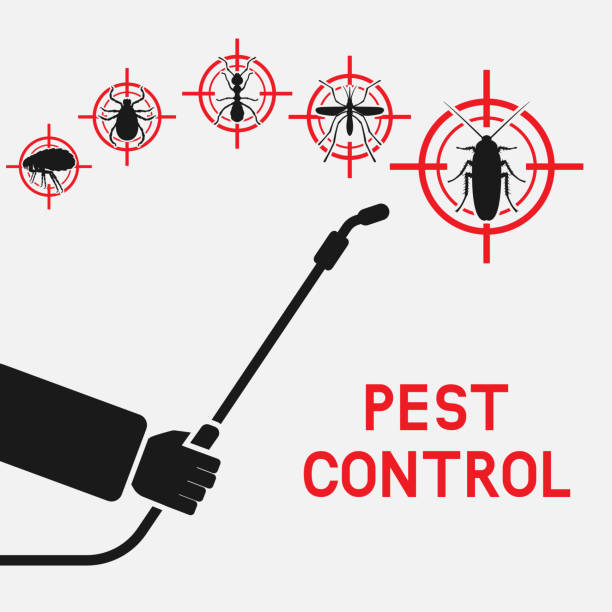Reliable Solutions for Pest Problems from Pest Control Lockhart
Reliable Solutions for Pest Problems from Pest Control Lockhart
Blog Article
Exploring Infestation and Therapy Strategies on the planet of Insect Control
The landscape of pest control includes a myriad of obstacles, especially as invasions of typical house parasites continue to advance. By incorporating precautionary actions with advanced monitoring strategies, such as Integrated Bug Management (IPM), house owners can better safeguard their environments.

Typical Home Pests
When it comes to managing our living rooms, understanding usual house parasites is critical. These pests not only interrupt our comfort however can additionally pose health risks and damages building. The most common home bugs include ants, roaches, rodents, termites, and bed pests.
Ants, commonly seen foraging in kitchens, can pollute food and establish big nests. Roaches, known for their strength, can activate allergies and spread virus. Rats, including mice and rats, can cause architectural damages and lug diseases like hantavirus and salmonella. Termites, typically described as "silent destroyers," can endanger the integrity of wooden frameworks, leading to expensive fixings. Bed pests, although not condition providers, can cause significant discomfort with their bites and cause mental distress.
Identifying the indications of these bugs, such as droppings, nests, or bite marks, is crucial for early treatment (Pest Control Lockhart). Proper cleanliness techniques, securing entrance points, and preserving a clutter-free setting work preventative steps. By identifying these usual home insects and comprehending their behaviors, homeowners can take proactive actions to reduce infestations, ensuring a healthier living setting
Comprehending Insect Infestations
Pest infestations can escalate promptly, turning a minor nuisance right into a substantial issue if not resolved promptly. Typical aspects adding to invasions include inadequate cleanliness, structural vulnerabilities, and seasonal modifications that drive insects inside.
Determining the kind of bug is necessary, as different types display diverse actions and reproductive rates. Rats may develop nests in concealed areas while pests like cockroaches grow in moist settings. Early detection frequently depends upon recognizing indicators such as droppings, gnaw marks, or uncommon noises, which can show a trouble prior to it ends up being extreme.
Warm, damp environments can assist in the rapid development of bug populations, while changes in landscape design or building can unintentionally develop favorable environments. An informed approach to recognizing these characteristics lays the foundation for reliable pest administration approaches in the future.
Treatment Methods and Methods
Effective treatment approaches and methods are necessary for mitigating pest infestations and restoring a secure atmosphere. A diverse technique is usually best, including chemical, organic, and mechanical strategies customized to the specific parasite and the seriousness of the problem.
Chemical treatments informative post consist of the usage of pesticides and herbicides, which can properly get rid of insects. Nevertheless, correct application and adherence to safety and security standards are essential to minimize threats to human beings and non-target organisms. Integrated Insect Administration (IPM) motivates the cautious use chemicals as a last resource, counting instead on monitoring and threshold degrees to determine intervention requirements.
Organic control approaches include introducing natural killers or bloodsuckers to lower bug populaces. This method is increasingly prominent, specifically in agricultural settings, as it advertises ecological sustainability.
Mechanical methods, such as catches and barriers, provide immediate alleviation from insects without introducing chemicals. Options include sticky catches for bugs or physical obstacles for rats.
Eventually, the choice of therapy approach ought to think about the particular pest, the environment, and possible influence on human health and communities. A balanced mix of these methods can efficiently handle invasions while advertising lasting insect control services.
Preventative Actions for House
Proactively resolving parasite issues before they intensify is essential for keeping a healthy and balanced home setting (Pest Control Lockhart). Executing reliable preventive actions can considerably reduce the likelihood of invasions, inevitably securing both your home and well-being

Appropriate landscaping additionally plays an essential role in avoidance. Keeping bushes and trees trimmed away from your house lowers the chances of insects finding their means inside. Ensure that drain systems are functioning efficiently to protect against standing water, which can draw in mosquitoes and various other pests.
Last but not least, go right here regular examinations are advisable. Frequently looking for indicators of pest task enables very early treatment. By adopting these preventive measures, house owners can create a setting that is much less hospitable to pests, therefore improving their overall lifestyle and lowering the requirement for comprehensive insect control interventions.
Industrial Pest Control Approaches
A detailed strategy to business parasite control is important for companies aiming to maintain a secure and hygienic atmosphere. Effective techniques entail a combination of regular inspections, staff member training, and the application of Integrated Insect Administration (IPM) methods.
Normal inspections make it possible for early detection of insect task, permitting for prompt intervention. Companies should create a routine timetable for these assessments, focusing on risky locations such as kitchens, storage space spaces, and garbage disposal sites. Staff member training is equally vital; team ought to be informed on the indications of pest infestations and the value of reporting them promptly.
Applying IPM practices helps mitigate insect issues sustainably. This consists of habitat alteration, such as securing access factors and decreasing mess, along with using all-natural deterrents prior to considering chemical therapies.

In addition, teaming up with a qualified insect control copyright ensures access to specialist knowledge and innovative treatment choices. This partnership can cause personalized pest control plans tailored to the certain requirements of business, reducing threats and boosting total effectiveness. Ultimately, an aggressive and enlightened method fosters a pest-free environment, securing both public wellness and service credibility.
Conclusion
In final thought, reliable parasite control necessitates a comprehensive understanding of typical household parasites and their actions, combined with advice targeted treatment approaches. Executing preventative procedures along with therapy methods such as Integrated Bug Management and biological control improves the capability to mitigate problems.
Report this page